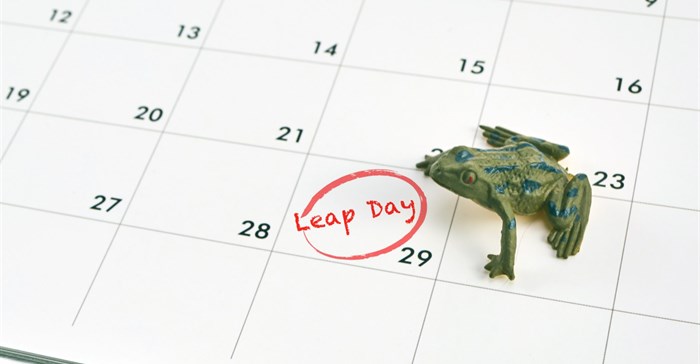
Leap days are special for many reasons.
If we travel back in time to ancient Rome, the calendar was based on the moon, which is great for tracking lunar phases, but not so good for keeping track of the seasons.
They would occasionally add an extra month, called Mercedonius, to keep things roughly coordinated with the seasons, but this wasn't consistent or based on a set number of years like the leap year system.
Enter Julius Caesar in 45 BC. He wanted a more reliable calendar for the Roman Empire, one that synced with the sun's cycle. So, he introduced the Julian calendar, which added a leap day every four years.
By introducing a standardised calendar, Caesar aimed to consolidate power and establish himself as a figure who could bring order and stability to the empire.
Additionally, the calendar reflected Caesar's own values regarding organisation and efficiency – and gave the world another thing to account to his name (we see you “Caesarean section").
This wasn't exactly the same system we use today, but it was a big step forward.
However, even the Julian calendar wasn't perfect. It was still slightly out of sync with the solar year.
It takes Earth 23 hours, 56 minutes, and 4 seconds to complete one full rotation on its axis. This is rounded up to 24 hours and called a sidereal day.
That slight inaccuracy in the measurement caused the calendar dates of the seasons to regress almost one day per century.
From Julius to Gregory
It takes Earth 365 days, 5 hours, 48 minutes, 45.25 seconds to complete one full revolution around the Sun.
This is slightly shorter than a 365-day, 6-hour solar year. Over centuries, this meant seasons slowly drifted out of place by about one day per 100 years.
And, because Easter was tied to the Spring equinox at the First Council of Nicaea, it was shifting deeper into the northern Winter calendar according to the sundials.
By the time of the reign of Pope Gregory XIII, the northern Spring equinox had marched forward by 10 days.
Pope Gregory commissioned a study to correct the error and introduced the Gregorian calendar in 1582, which required 10 days to be stripped between 4 October and 15 October of that year to restore Easter to its place.
Aloysius Lilius was the primary author of the study proposing the new calendar that included a clever rule for leap years which skipped adding a leap day in most century years (like 1900), except for those divisible by 400 (like 2000).
This keeps the Gregorian calendar remarkably accurate and compensates for the undercount in the Julian calendar.
Modern links to the ancient world
For his efforts, IBM computer scientist Bruce Ohms immortalised Lilius by naming the timescale that tracks the number of days since the beginning of the Gregorian calendar as the Lilian date in 1986.
The Julian calendar, however, lives on today thanks to the telescope, first said to be developed by Hans Lippershey in the Netherlands around 1608, and later refined by Galileo Galilei.
By observing the movements of stars and planets with greater precision, astronomers could refine techniques for time measurement.
This contributed to the development of more accurate clocks and improved methods for calculating time zones – which are segmented at one-hour intervals based on high noon – direct solar radiation – at the Greenwich Meridian at the Royal Observatory in the UK.
Coordinated Universal Time (UTC) is a refinement on Greenwich Mean Time (GMT) and thus based on Caesar’s original invention.
29 February is not just an extra day, it's a testament to human ingenuity and our constant quest to keep time in harmony with the cosmos - and prime growing seasons.




























































